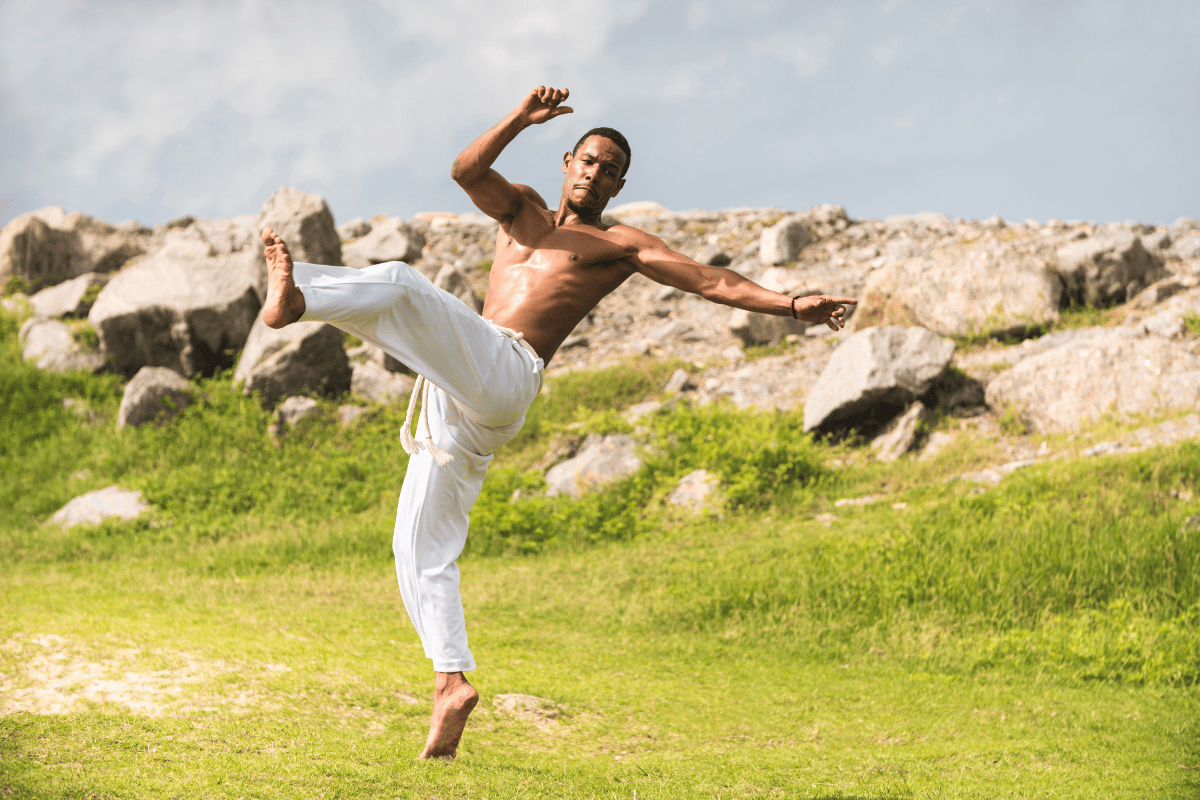Celebrate Capoeiristas in August
August 3 is Capoeirista Day in Brazil. It is a day specifically dedicated to celebrating practitioners of capoeira, the national martial art of Brazil. A unique blend of dance, acrobatics, and self-defense, this captivating art form has become a symbol of national identity. In honor of Capoeirista Day, let’s take a closer look at capoeira’s rich history and traditions.
Origins of Capoeira
Capoeira originated in Brazil during the 16th century when African slaves were brought to the country by Portuguese colonizers. The slaves brought with them their cultural traditions, including food, music, language, and even combat techniques. As combat practice was forbidden among the slaves, it was often cleverly disguised as a form of dance.
Capoeira is believed to be specifically descended from a ritual combat technique known as “Engolo” or “Ngolo.” This is a fighting style practiced by many tribes in southern Angola. Like capoeira, it relies heavily on inverted positions (one or more hand touching the ground) and is designed to be especially useful when one is outnumbered.
The exploitation of capoeiristas by warlords and other criminals in the late 19th century led to it being officially banned in 1890. Anyone caught practicing capoeira would be punished severely.
The Re-Emergence of Brazil’s Martial Art
By the 1920s, masters of Capoeira attempted to bypass the ban by incorporating elements from gymnastics and other martial arts, such as judo. It was presented as a form of self defense, rather than combat technique. In 1920, Anibal “Zuma” Burlamaqui penned the first official manual about the instruction and technique of Capoeira.
Unfortunately, the attempts to hide Capoeira from the authorities resulted in it being significantly pared down from its original roots. Manuel dos Reis Machado recognized the issue, and founded the first official school of Capoeira in 1932. Although the school taught traditional Capoeira techniques, that name was not mentioned in the school’s title. Instead, it was called “Regional fighting of Bahia,” to avoid policy scrutiny.
Machado founded an additional school in 1937 and, in large part due to his efforts, capoeira was legalized once again in 1940. Machado was affectionately known as “Mestra Bimba” by his students, and remains a capoeira legend to this day.
Techniques Used in Capoeira
Capoeira is a dynamic art form that combines elements of martial arts, acrobatics, dance, and music. It is characterized by fluid movements, spins, kicks, and sweeps. Often performed in a roda, a circle formed by participants, capoeira involves two players engaging in a rhythmic dialogue of attacks and defensive maneuvers. The roda is surrounded by musicians playing traditional instruments, such as the berimbau, pandeiro, and atabaque, creating an electrifying atmosphere.
The ginga is a signature move in capoeira. It is a rocking movement designed to both keep the capoerista in constant motion, and to allow them to trick their sparring partner with a combination of feints and fakes. Most strikes in capoeira involve the legs. For example, tesouras are hits to the knee, and resteiras are full leg sweeps.
Blocking is not common in capoeira, as it is considered a last resort. Rather, capoeiristas favor dodging movements collectively known as esquivas. These can be quite acrobatic. The au, for example, is a cartwheel-like maneuver that can be used to regain balance or avoid a takedown.
Traditions of the Capoeirista
Capoeira has its own traditions and codes of conduct. The mestre, the highest rank in capoeira, leads the group and guides students in their training. Respect for elders, known as “Axé,” is a fundamental principle of capoeira, as it acknowledges the experience and wisdom passed down through generations. Additionally, capoeira fosters a strong sense of community, promoting inclusivity and friendship among practitioners.
Uniform and Attire
The traditional uniform worn by capoeiristas is known as the “abada.” This term refers to a pair of loose-fitting white pants. Modern abadas typically incorporate the school’s emblem. Today, many schools do not require a specific uniform, and any athletic clothing may be acceptable.
In addition to the abada, capoeiristas may wear accessories such as a corda (cord) around their waist, indicating their level of proficiency. There are 8 colors, with transitional cords in between: yellow, orange, red, blue, green, purple, brown, and black. The corda serves as a visual representation of the practitioner’s dedication and progress within the art.
Are their Female Capoeiristas?
Of course! Women have been involve in capoeira since its inception, albeit in smaller numbers and not without significant prejudice. While it is not uncommon today to see women in the roda, it has taken a good deal of work to equalize the sport. You can read more about the fascinating history of women in capoeira here.
Capoeira Around the World
Capoeira is more than just a martial art; it is a cultural expression deeply intertwined with the history and identity of Brazil. Its unique beauty, complexity, and efficacy has a universal appeal. Today, capoeiristas can be found all over the world.
Capoeirista Day celebrates the vibrancy, diversity, and unity of capoeiristas worldwide. If you know a practitioner, be sure to honor them on August 3 by attending a workshop, demonstration, or other event dedicated to this unique art form. And by all means, try an intro class! (Consult your healthcare provider beforehand, of course.)

